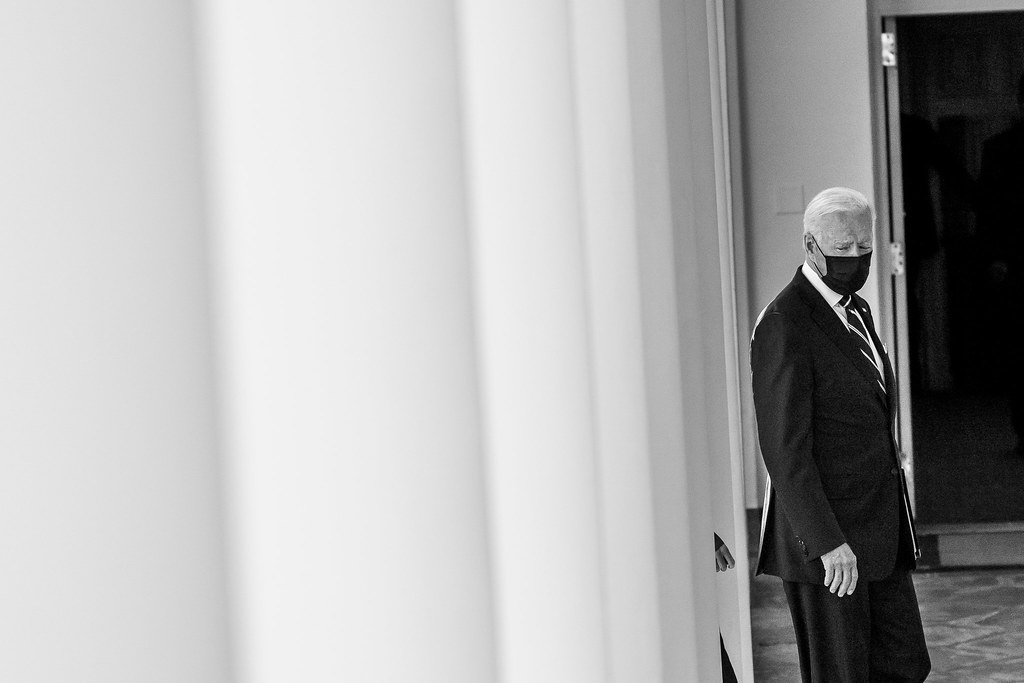On CBS’s 60 Minutes this past weekend, President Joe Biden declared to a national audience that “the pandemic is over.” As physicians who see firsthand the daily realities of COVID-19, we and many others beg to differ. Thousands are still dying from the disease every week, and one source of contagion that has laid bare America’s astounding precarity in responding to public health threats is seen in how our nation’s jails and prisons, to this day, continue to undermine our collective wellbeing. The United States’ unique commitment to punishment remains a major reason that the country has fared so comparatively poorly in terms of COVID-related infections and deaths.
Carceral institutions have been responsible for the majority of the largest single-site outbreaks across the country and significantly contribute to community spread on a local level given the high turnover in jails. The pandemic has renewed longstanding discussions about the intersection of public health and public safety — and how American carceral settings are fundamentally ill-suited to address either. For instance, not only is incarceration a poor deterrent of future criminal activity, but incarcerated individuals also continue to suffer from COVID-related infection and death at a rate more than three times that of the non-incarcerated population.
Pervasive failures to address even simple mitigating factors such as adequate hygiene provisions and personal protective equipment, low staff vaccination rates, and refusal to address overcrowding have allowed wave after wave to sweep through jails and prisons, contributing to excess preventable illness and death.
The United States’ unique commitment to punishment remains a major reason that the country has fared so comparatively poorly in terms of COVID-related infections and deaths.
Despite the surge in media coverage, it did not take COVID-19 to know that jails and prisons are vectors for the spread of infectious diseases. Data for how carceral settings make people in and around them sick has long been available for ailments like tuberculosis, HIV, Hepatitis C, other infections like MRSA and Legionnaires’ disease, and foodborne illnesses. In this light, the underwhelming preparation and response to COVID-19 can be understood more as a disregard for the lives of incarcerated individuals than a lack of knowledge surrounding the risks. More than two years into the pandemic, Los Angeles County jail’s booking center remains overcrowded, with incarcerated people lacking access to beds, showers, and, at times, toilets.
This same cycle is happening yet again with the emergence of monkeypox. Monkeypox is spread through close physical contact and can likely be spread through laundry and other carceral work assignments where people are directly exposed to objects such as bedding. Experts like Dr. Homer Venters, the former chief medical officer of the New York City Jail system, have expressed concerns that carceral outbreaks of monkeypox seem imminent, and monkeypox cases have already been found in San Francisco, Chicago, and New York’s incarcerated populations. In our home state of Georgia, we have one of the highest rates of monkeypox spread in the country, disproportionately among Black men, the same population that is overrepresented in Georgia prisons and jails due to ongoing, discriminatory practices. It is already well past time to take preventative steps to avoid large carceral outbreaks.
More from our decarceral brainstorm
Every week, Inquest aims to bring you insights from people thinking through and working for a world without mass incarceration.
Sign up for our newsletter for the latest.
Newsletter
Given the Department of Health and Human Services’s August declaration of monkeypox as a national public health emergency and increased federal powers related to it, the federal government should demand that all carceral facilities accurately screen incarcerated individuals and staff, report pending and confirmed cases, and give immediate guidance for decarcerating these institutions for the purposes of our collective public health. Left to their own devices, prison and jail administrators at the state and local level cannot be expected to act urgently or effectively. In Georgia, for example, prison officials stopped collecting and reporting COVID-related data in July 2021, despite new surges. This lack of transparency and other secretive practices have only worsened already horrific conditions.
Additionally, the federal government should suggest that high-risk incarcerated individuals obtain priority vaccine access, something that was neglected when coronavirus vaccines were first available. Medically vulnerable and elderly individuals, as well as those held in pre-trial detention who are bail-eligible yet unable to afford payment should be released. The prosecution of misdemeanor crimes of poverty and drug-related charges should end. Caging people accused of low-level, poverty-related crimes does nothing for public safety, and it may fuel yet another pandemic.
Neglecting the threat of monkeypox would constitute a denial of the medical rights that all incarcerated individuals are legally entitled to by deliberately permitting their exposure to preventable illness. It is not reasonable to expect jail medical screenings to identify monkeypox infections coming into a jail system given that the average time from exposure to rash onset is over eight days. It is also unacceptable to allow another public health emergency to explode unchecked in our carceral systems only to revert to inhumane isolation policies known to negatively impact mental health, as has been done during the coronavirus pandemic, where solitary confinement increased 500 percent. This is particularly important given monkeypox’s prolonged isolation period, which in a carceral setting could constitute torture as defined by the United Nations Nelson Mandela Rules.
The president’s comments aside, monkeypox can provide yet another opportunity to redefine what public safety looks like by taking public health seriously — and accepting that incarceration is not a means of increasing public safety but of punishing those in need of care.
Image: Erin Scott/White House (via Flickr)


